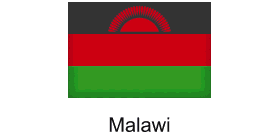 Revitalizing Northern Malawi: Mzuzu and Karonga Airports Set to Transform Regional Travel
Revitalizing Northern Malawi: Mzuzu and Karonga Airports Set to Transform Regional Travel
The recent developments at Mzuzu and Karonga airports are poised to significantly enhance the travel landscape in northern Malawi, promising to boost both regional connectivity and economic growth. These upgrades are not just infrastructural improvements but are strategic moves that could reshape the way travel and trade are conducted across the region.
Mzuzu Airport, now equipped with a longer runway and refurbished facilities, is ready to handle larger aircraft. This upgrade from a 1,300-meter to a 1,700-meter runway opens new avenues for increased passenger and cargo flights, directly linking northern Malawi to major cities and potentially international destinations. The implications for the local economy are profound, as this development enhances the airport's capacity to facilitate larger volumes of tourists and business travelers, thereby boosting the area's tourism and commercial sectors.
Similarly, Karonga Airport, while smaller, plays a crucial role in supporting the northern region's economic activities, particularly the mining sector. With the Kayelekera Uranium Mine set to restart operations, the airport's role in facilitating the movement of goods and personnel becomes even more critical. This is expected to stimulate local businesses and provide a steady influx of professionals and technicians involved in the mining industry.
The strategic location of these airports also enhances Malawi's connectivity with neighboring countries. Improved air links can lead to increased trade and tourism flows from Tanzania and Zambia, further integrating Malawi into the regional economy. This connectivity is vital for landlocked Malawi, offering a quicker, more efficient route for exports and imports, thus reducing transportation costs and opening up new markets for local products.
The ripple effects of these developments extend beyond immediate economic gains. For instance, the tourism sector in northern Malawi is set to receive a significant boost. With easier access to Malawi’s natural and cultural heritage sites, such as the Nyika Plateau and Lake Malawi, there is potential for a substantial increase in tourist arrivals. This not only benefits hotels and restaurants but also creates opportunities for local artisans and service providers, who can now reach a broader audience.
For African travel agents, these developments offer a plethora of new business opportunities. They can now promote northern Malawi as a prime destination for eco-tourism and cultural tours, leveraging the improved accessibility provided by the upgraded airports. Additionally, the increased flight capacity and frequency can be used to create attractive travel packages that include regional tours, potentially partnering with airlines for bundled offers.
The revitalization of Mzuzu and Karonga airports is a testament to the transformative power of targeted infrastructural investments in boosting regional economies. By facilitating smoother travel and trade, these airports not only serve their immediate locales but also contribute to the broader goal of economic integration within the Southern African Development Community (SADC) region. This strategic enhancement of transport infrastructure is crucial for unlocking the economic potential of northern Malawi and by extension, enhancing the overall competitiveness of the African travel industry.
As these airports begin to operate at their new capacity, the future looks promising for the region's travel and tourism sectors. Travel professionals are encouraged to tap into this emerging market, crafting unique travel solutions that cater to the evolving needs of the modern traveler and capitalize on northern Malawi's renewed accessibility and appeal.
